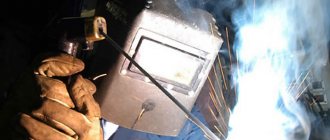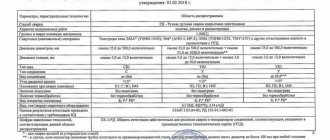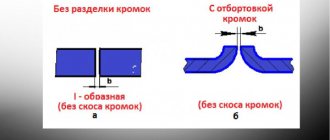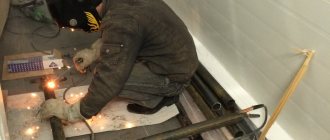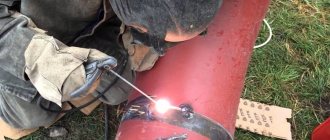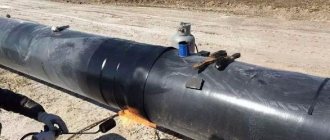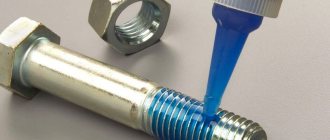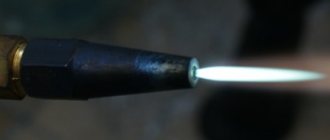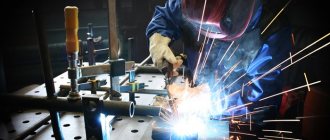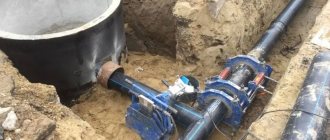11/19/2020 Author: VT-METALL
Issues discussed in the material:
- About preparing pipes for rotary welding
- “Operational” seam during rotary welding of pipes
- Requirements for assembly and welding of pipes using the rotary method
When installing a pipeline, rotary welding of pipes is often used. This is due to the fact that with this joining method, a greater number of seams are made in the lower position, and this, in turn, is considered the most optimal, since the pace and quality of assembly increases.
In our article we will talk about how pipe welding is carried out using the rotary method, what needs to be done at the preparation stage, and we will also analyze the basic requirements that are put forward for the assembly and welding of pipelines.
Content
- The first method of welding a rotary joint
- The second method of welding pipes with a rotating joint
- Third way. Welding of large diameter rotary pipes
- Video: welding rotary pipe joints
- Welding of rotary joints with a pipe diameter less than 200 mm
Penetration of the root of the seam is carried out using electrodes with a diameter of 2-4 mm. The height of the first seam is usually 3-4mm. To perform the second and subsequent layers, electrodes with a larger diameter and higher current are selected. The first and second layers of the seam can be performed in several ways, which are discussed below.
Selecting mode parameters
The type and polarity of the current is determined depending on the grade of steel, the thickness of the pipe wall, and the grade of the coated electrode.
The welding current is determined by the diameter of the electrode dе (mm), which is selected depending on the thickness of the pipe:
Low carbon and low alloy structural steels:
Isv = (30-40)de, A
High alloy chromium-nickel steels:
Isv=(25-30)de, A
The arc voltage is determined by its length. The optimal arc length is chosen between the minimum (0.5dе) and maximum (dе+1).
the welding speed depending on the required geometric dimensions of the weld or weld bead.
Approximate welding modes
| Electrode coating | Electrode diameter, mm | Welding current (A) at seam position | ||
| lower | vertical | ceiling | ||
| Basics | 2,5 | 70-90 | 60-80 | 55-75 |
| 3 | 90 -110 | 80-100 | 70-90 | |
| 4 | 120 -170 | 110-150 | 95-135 | |
| 5 | 170-210 | 150-190 | — | |
| Rutile | 2,5 | 70-90 | 60-80 | 55-75 |
| 3 | 90-130 | 80-115 | 75-105 | |
| 4 | 140 -190 | 125-170 | 110 -155 | |
| 5 | 180 -230 | 165-205 | — | |
When welding pipes of small (up to 100 mm) diameter with a wall thickness of 2-10 mm from carbon, low-alloy and heat-resistant steels:
- the joint is assembled in fixtures and secured using manual argon arc welding at one or two points located symmetrically;
- a joint fastened with one tack is immediately scalded, starting from the side opposite the tack;
- when the wall thickness is less than 3 mm, tack is performed with an electrode with a diameter of no more than 2.5 mm.
Joints of pipes with a wall thickness of more than 4 mm are welded in at least two layers:
I - root seam (layer); II - facing rollers (layers); 1; 2; 3; 4; 5 - execution order
Sequence of manual welding of pipe joints with a diameter of less than 100 mm
| With two tacks 10-15 mm long, 3-4 mm high | With one tack 10-20 mm long, 3-4 mm high | Without tacks (using a device) |
| Vertical position of the joint | ||
| Horizontal joint position | ||
When welding pipes with a diameter of 30-83 mm:
|
The first method of welding a rotary joint
The pipeline joint is conventionally divided into 4 approximately identical sections. First, sections 1-2 are welded, then the pipe is turned 180° and sections 3 and 4 are welded. The diagram of this welding method is shown in the figure below.
After welding the first layer, the pipe is turned another 90° and sections 5 and 6 are welded. And then, after turning the pipe another 180°, the remaining sections 7 and 8 are welded.
Preparing for work
The technology for preparing to start welding is as follows: before starting work, you need to prepare the metal, that is, mark, cut and assemble pipes. To do this, you need to install the pipe sections in their original position and clean each joint of slag, rust, dirt, old paint and other deposits. After this, markings should be carried out, that is, using a tape measure, square and scriber, transfer the dimensions of the part from the drawing to the metal. You can use a metal template for this purpose. It should be taken into account that pipe sections are somewhat shortened during the welding process. Therefore, you should leave an allowance using the calculation of 1 mm per transverse joint, 0.1–0.2 per 1 mm of longitudinal seam.
Since pipes have a predominantly round cross-section, thermal cutting is most often used when preparing pipe sections.
Stages of welding polypropylene pipe.
About a third of the total labor intensity is the assembly of parts for welding. When assembling, you should take into account the manufacturer, based on the product series, pipe diameter and other factors. For assembly, so-called welding tacks are used. These are short, lightweight seams with a cross-section of up to one third of a full-fledged seam. The length of the tack depends on the thickness and diameter of the pipe. It can be from 20 to 120 mm. Welding tacks are used to prevent displacement of pipe sections, which can lead to cracks during cooling. When welding pipes of large thickness and diameter with gas or electricity, or welding in an awkward position, assembly is performed using mechanical devices.
In order to ignite the arc, the end of the electrode is short-circuited with the pipe and the electrode is separated from the surface of the pipe. The distance should be equal to the diameter of the coated electrode. This is necessary to heat the metal to the desired temperature at the cathode spot. Heating will release primary electrons.
The following methods are used to ignite the arc: end-to-end and sliding.
When igniting back to back, the metal heats up at the short circuit point. And when the arc is ignited by the sliding method, the metal is heated at several points along the welding surface of the pipe.
The second method is used more often. The first one is used when welding narrow pipes of small diameter in an awkward position.
The second method of welding pipes with a rotating joint
Also, as in the first method, the joint is conventionally divided into 4 approximately equal sections. First, sections 1 and 2 are welded, then the pipe is turned 90° and sections 3 and 4 are welded. The diagram of this method is shown in the figure below.
After the first layer of the seam is welded, the pipe is turned 90° and sections 5 and 6 are welded, then the pipe is turned 90° again and sections 7 and 8 are welded.
Necessary equipment, materials and protective equipment
Welding work must be carried out in a spacious, well-ventilated room or in the open air, away from flammable substances. The main working tool for connecting pipes will be an AC or DC electric welding machine. Good equipment costs a lot of money, so for one-time welding, if possible, it is better to borrow it. In addition, you will need:
- fixing devices;
- electrodes and electrode holders;
- welding cable;
- hammer and chisel;
- sandpaper and wire brush.
A prerequisite is the availability of personal protective equipment (PPE). Hands should be protected with thick welding gloves; To protect your head and, above all, your eyes, you will need a welding helmet. It is equipped with darkened glass that “cuts off” the infrared and ultraviolet parts of the light spectrum.
You should work in comfortable, closed clothing that does not restrict movement and made of non-flammable materials.
Third way. Welding of large diameter rotary pipes
This welding method is used for welding large diameter pipes, more than 500 mm. With this method, the joint is divided into several sections and welding is performed in a reverse-step manner. The welding diagram is shown below.
The recommended length of each section of the seam is 150-300mm and it depends on the diameter of the pipeline.
The third layer of the weld, regardless of the method of welding the first layers, is performed in one direction with constant rotation of the pipe.
Safety regulations
Safety precautions during welding work.
Any types of welding (gas, electricity, etc.) must be carried out at sites equipped with special equipment. This includes special screens and shields to protect against the effects of electric arcs. These protective devices must be located in such a position that workers present in the room but not involved in welding are fully protected.
If welding of pipes of large diameter and weighing more than 20 kg is carried out, lifting and transport mechanisms must be available. The width of the passage to the welding site must be at least one meter. The temperature in the room where welding is performed must not be lower than +16 degrees Celsius. There must be ventilation and adequate lighting of the welding area.
Persons performing welding work must use special clothing. Welding technology requires grounding of the metal parts of the device; the work table and the transformer housing must also be grounded. The insulation on all cables and wires must be intact and protected from mechanical and temperature damage.
All parts of the device must be made of fire-resistant material. In case of problems in the electrical circuit, only a professional electrician can make corrections with the switch turned off.
Now let's give an example of calculating the volume and mass of deposited metal.
If we proceed from the total length of the electrode of 47 cm and the cross-sectional area of the weld of 0.5 cm and take the specific volume of the deposited metal as 7.8 g/cm, then the volume is equal to the product of the length and the cross-section and the specific volume.
If the length is designated as L, the cross-section as S, and the specific volume as Vsp, then the total volume of deposited metal is equal to the product of L, S and Vsp, which is equal to 1880 g.
The mass of the deposited metal is equal to the product of the volume and the coefficient of the deposited metal and is 1.88 kg/m3 if electrodes of the VSP-1 type with a coefficient of 10 are used.
Welding of rotary joints with a pipe diameter less than 200 mm
If the diameter of the pipeline to be connected does not exceed 200 mm, then the joint can not be divided into sections, but welded with one continuous seam, see the figure below:
In this case, the second and third layers are performed similarly to the first, but each time, with the subsequent layer, the welding direction is changed to the opposite. And in all cases it is necessary to overlap each previous layer with the next one by 10-15mm.
Additional
Welding technology
Immediately after the arc is ignited, the melting of the metals - the main and the electrode - begins. The quality of the weld and the productivity of the work depend on the length of the arc. Therefore, choosing the correct arc length is especially important. Electrodes must be fed into the arc at the rate at which the electrode melts. The higher the qualification of the specialist, the better he is able to maintain the length of the arc.
An arc that is equal to 0.5 to 1.1 times the diameter of the electrode is considered normal. In order to calculate the arc length more accurately, you need to know what type and brand of electrodes are used. The position of the welding site also matters. If the arc is longer than normal, then combustion stability decreases, losses due to waste increase, the surface of the weld is uneven, and the depth of penetration is uneven.
In order for the seam to be made efficiently, you need to pay attention to the angle of inclination of the electrode. To work in the lower position, the angle of the electrode is from 15 to 30 degrees back. As a rule, the arc is directed in the same direction as the electrodes. The correct slope, in addition to a high-quality seam, also gives a lower cooling rate of the metal.
To obtain a roll of metal of the required width, you need to perform oscillatory movements of the electrode in the transverse direction. Using oscillatory movements, seams with a bead width from 1.5 to 4 electrode diameters are obtained. These are the seams that are most often used.
Obtaining a well-cooked root is achieved by moving in a triangle. This movement is carried out by making fillet welds with seam legs of more than 6 mm and butt edges with a bevel.
Such seams can be distinguished by the method of filling them: single-layer, multi-layer, single-pass, multi-pass.
A seam is called multilayer if the number of its layers corresponds to the number of arc passes. Such seams are most often used in problem areas and at joints.
Multi-pass welds are used in corners and T-joints.
To enhance strength, the seam is made in cascades, sections or blocks. All these seams are produced using the reverse-stage welding method.
Types of pipelines and welding
Welding of pipelines is carried out taking into account their type:
- main lines;
- water;
- technological and industrial;
- sewer;
- gas supply structures.
The following types of welding are distinguished:
- mechanical (due to friction);
- thermal (melting using plasma, gas or electro-beam method);
- thermomechanical (magnetically controlled arc obtained using the butt contact method).
The use of a certain type of connection also depends on the pipe material:
| Material | Welding type |
| Copper | Electric arc, gas or contact. The first connection method using a tungsten non-consumable electrode and filler wire is more effective. Argon or nitrogen is recommended as shielding gas |
| Steel | Semi-automatic machines are used, as well as electric and gas welding |
| Galvanized pipes | Any type of connection can be used, but flux is considered a mandatory component, protecting the product from fading of the coating |
| Profile structures | Welding is performed using gas or arc methods. The experience of the welder is important here |
How to solder a copper pipe yourself In a modern apartment there are many copper pipelines. They can be found in heating radiators, some sections of water supply, air conditioners, and refrigeration units. When full or...
Types of pipelines and welding
There are a huge number of pipelines that are used to move different materials and working fluids. Based on their purpose, there is the following classification:
- technological;
- main lines;
- industrial;
- gas supply pipelines;
- water;
- sewer.
Read also: Machine for tightening car strut springs
In the manufacture of pipelines, various materials are used - ceramics, plastic, concrete and various types of metals.
Modern welders use three main methods for joining pipes:
- Mechanical is carried out due to explosions as a result of friction.
- Thermal, which is carried out by melting, for example by gas welding, plasma or electric beam.
- Thermo-mechanical is produced by a magnetically controlled arc using the butt contact method.
There are many types of welding, which are divided into many classifications. Before you weld pipes, you need to figure out what is the best way to do it. Theoretically, each type is suitable for welding pipes of small and large diameters. It can be carried out by melting and pressure. Melting methods include electric arc and gas welding, and pressure methods include gas press, cold, ultrasonic and contact. The most common methods for connecting communications are manual electric arc and mechanized.
Proper root welding
When properly welding a root with electricity and gas, after cooking, you need to clean the end and beginning under the knife in order to hide traces of switching to another electrode. Welding the root with a second electrode begins with already welded and cleaned areas, covering them with a second layer. Welding the root, performed in this way, allows you to create an almost monolithic seam.
During the welding process, external and internal defects of various types sometimes occur. External defects include fumes, splashes, concave roots, microcracks and other defects.
Some defects are fixable. But the economic feasibility of such a correction should be calculated.
Requirements for a weld according to GOST
The basic requirements for seam quality and control methods are set out in GOST 23118-99 . It specifies the requirements for the continuity of the seam, the absence of undercuts, tops and other defects.
GOST 5264-80 regulates the shape of the seam, its scaliness, convexity and width. On what connections, what leg should it be. He recommends equipment and tools for specific jobs based on the material.
To complete the training and begin quickly and correctly connecting parts, the technician must first study the theory. Then practice takes over. A thin sheet should be connected to another several times in a row, changing the modes and speed of the arc. After obtaining parts with a perfect convex joint, you can move on to alloy metals and non-ferrous steels. And only when the vertical and the ceiling are conquered. Start welding pipes.
